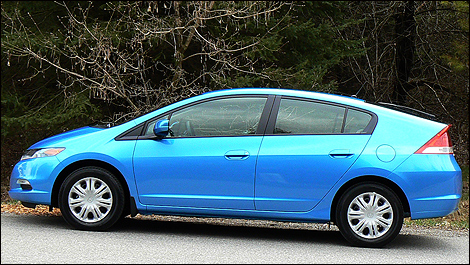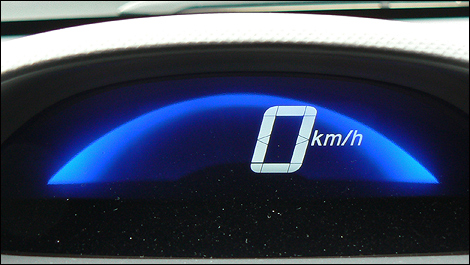Green is in, and not the color, literally speaking.
Fuel economy, clean emissions and extended range are touted more and more frequently around the new-car marketplace. Atmospheric friendliness and ecological responsibility may soon become must-have attributes, and growing circles brag more about consumption figures than horsepower and torque.
 |
| From some angles, the highly aerodynamic shape and unique proportions are easily appreciated. |
Of course, the path to what some define as a green motoring future is a challenging one. Clean diesel, electric, hybrid and even fuel cell technologies all seek to satisfy similar desires for less impactful transportation. Thing is, each has its issues.
Batteries are expensive. Electric-only doesn't work in all markets. Diesel has a somewhat nasty consumer perception.
Then, there's hydrogen.
Despite being the universes most bountiful chemical, it's inconveniently absent from the pumps at your local Sunoco.
Ultimately, no single solution has all the bases covered. Honda Canada's Executive Vice Preseident, Jerry Chenkin, explains the growing trend towards alternative fuel technology, and the importance of keeping the options open through research.
"There shouldn't be any or winners and losers, and anybody with a single solution will have a problem. Many companies reduced R&D investments in light of the financial crisis, but we have increased ours. It's a shift in priorities, which is why we got out of Formula 1 racing. We need to ensure we can chase all the solutions we can".
Of course, one solution is to make better use of gasoline. Gas is an easy sell, relatively clean, very proven, and available on any street corner.
Gas isn't without its problems, though. There's a finite amount of it, and most isn't controlled by the planet's most stable hands. Honda America's Robert Bienenfeld puts things into perspective.
"About 96 percent of transport energy comes from crude oil today. Up to 90 percent of oil and gas reserves are partially or fully controlled by dictatorial governments."
 |
| A colored ring around the digital speedometer changes between green and blue to advise drivers of their fuel consumption performance in real time. |

